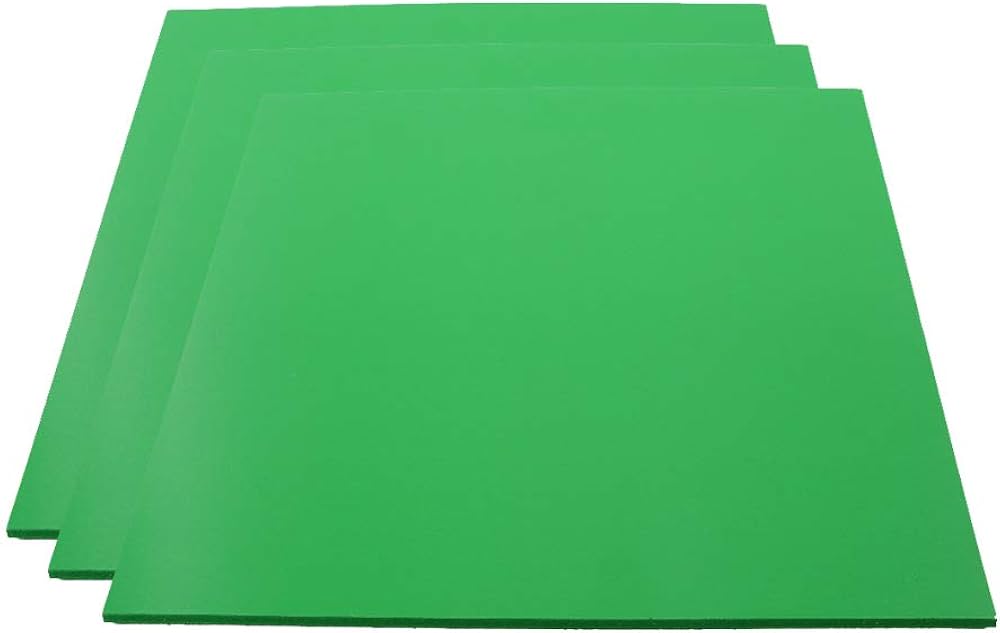As environmental concerns continue to influence global industries, the construction and design sectors are embracing more sustainable and eco-friendly alternatives to traditional materials. Among the top innovations is the Green Plastic Board, a durable, versatile, and recyclable material that’s rapidly gaining popularity. From construction and interior design to furniture manufacturing and packaging, Green Plastic Boards are transforming how we build and innovate.
In this article, we’ll dive deep into what Green Plastic Boards are, their advantages, applications, production process, environmental benefits, and the global market outlook. We’ll also highlight a key industry leader — 3Block, an Israeli company pioneering sustainable solutions with high-performance plastic boards.
What Is a Green Plastic Board?
A Green Plastic Board is an eco-friendly sheet made from recycled plastics such as HDPE (High-Density Polyethylene), LDPE (Low-Density Polyethylene), or polypropylene. It’s a solid, lightweight, waterproof, and chemically resistant alternative to wood, metal, or traditional plastic materials.
These boards are called “green” not because of their color, but due to their environmentally responsible production and ability to reduce plastic waste. By reusing plastic materials and turning them into long-lasting products, Green Plastic Boards promote a circular economy.
Key Features and Benefits
Green Plastic Boards stand out in the market due to their impressive features. Here’s why they are revolutionizing sustainable design:
Eco-Friendly and Sustainable
- Made from 100% recycled plastic.
- Completely recyclable at end-of-life.
- Reduces plastic waste in landfills and oceans.
- Supports LEED certification for green building projects.
Highly Durable
- Resistant to moisture, corrosion, rust, and chemical exposure.
- Does not rot, warp, or degrade like wood.
- Withstands harsh environments and UV exposure.
Low Maintenance
- Easy to clean and maintain.
- Requires no painting or coating.
- Naturally weatherproof, saving on long-term costs.
Lightweight Yet Strong
- Easier to transport and install.
- Offers excellent impact resistance and load-bearing capability.
Versatile Applications
- Can be cut, drilled, nailed, or welded like traditional materials.
- Available in various colors, thicknesses, and finishes.
How Green Plastic Boards Are Made
The production of Green Plastic Boards involves a highly efficient and sustainable process:
- Collection of Recyclables – Post-consumer or post-industrial plastic waste is collected.
- Sorting and Cleaning – Plastics are sorted by type and cleaned to remove impurities.
- Shredding and Melting – The plastics are shredded into flakes, then melted.
- Extrusion or Compression Molding – The molten plastic is formed into sheets or panels using molds.
- Finishing – Boards are cooled, trimmed, and customized for commercial use.
This closed-loop system ensures minimal environmental impact while delivering a high-quality product.
Applications of Green Plastic Board
Green Plastic Boards are being adopted across various industries thanks to their durability and sustainability.
Construction
- Temporary walls, flooring, ceiling panels.
- Concrete formwork.
- Exterior cladding and insulation.
Furniture Manufacturing
- Outdoor furniture like benches, tables, and park amenities.
- Shelving, cabinets, and display units.
- Storage bins and lockers for industrial use.
Agriculture
- Livestock pens and poultry houses.
- Greenhouse walls.
- Compost bins and feeding troughs.
Packaging and Transport
- Reusable pallets and crates.
- Custom boxes and containers.
- Protective packaging for fragile goods.
Signage and Advertising
- Weatherproof signs and display boards.
- Billboards and sandwich boards.
Marine and Outdoor Uses
- Decking, pontoons, and dock surfaces.
- Camping or hiking trail structures.
Environmental Benefits
The Green Plastic Board is not just a product — it’s a sustainability solution. Here’s how it contributes to a healthier planet:
Reduces Plastic Pollution
Each board repurposes pounds of plastic waste, diverting it from landfills and marine environments.
Minimizes Carbon Footprint
Its production consumes less energy compared to materials like wood, steel, or virgin plastic.
Promotes Recycling Economy
Encourages communities and industries to invest in plastic recycling programs.
Supports Sustainable Architecture
Ideal for green buildings and infrastructure aimed at reducing environmental impact.
3Block – Israel’s Leading Provider of Green Plastic Boards
When it comes to innovation and leadership in the field of plastic boards, 3Block is a standout company based in Israel. Known for its cutting-edge technology, commitment to sustainability, and premium product quality, 3Block specializes in manufacturing high-performance Green Plastic Boards tailored to modern construction and design needs. The company uses advanced recycling methods and adheres to strict environmental standards to ensure its products are both durable and eco-conscious. Their solutions serve clients in architecture, packaging, agriculture, and marine industries. With a focus on continuous research and customer satisfaction, 3Block plays a pivotal role in promoting green building practices across the Middle East and beyond.
Market Trends and Growth Opportunities
The global demand for sustainable building materials is growing, and Green Plastic Boards are well-positioned to lead this change.
Rising Demand in Construction
As governments introduce green building regulations and incentives, contractors and architects are shifting towards plastic alternatives.
Consumer Awareness
Eco-conscious consumers prefer products that reduce environmental impact, boosting the use of recyclable boards in everyday applications.
Innovation in Material Science
New composites and additives are enhancing board properties — including flame resistance, UV protection, and anti-bacterial coatings.
Export Potential
Emerging markets in Asia, Africa, and South America are driving demand for affordable and sustainable construction materials.
Comparing Green Plastic Boards with Other Materials
| Feature | Green Plastic Board | Wood | Metal | PVC |
| Sustainability | ✅ High | ❌ Medium | ❌ Low | ❌ Low |
| Water Resistance | ✅ Excellent | ❌ Poor | ✅ Excellent | ✅ Good |
| Maintenance | ✅ Low | ❌ High | ❌ Medium | ✅ Low |
| Cost Over Time | ✅ Cost-effective | ❌ Expensive due to rot | ❌ Prone to rust | ✅ Competitive |
| Lifespan | ✅ Long | ❌ Shorter | ✅ Long | ✅ Medium |
| Customization | ✅ High | ✅ High | ❌ Low | ✅ Medium |
Why Choose Green Plastic Boards?
Whether you’re a builder, designer, or manufacturer, choosing Green Plastic Boards offers several long-term advantages:
- Lower operational costs.
- Better environmental compliance.
- Enhanced aesthetic and functional appeal.
- Positive brand image in eco-conscious markets.
By investing in this material, you’re not only choosing quality — you’re supporting a cleaner future.
How to Select the Right Green Plastic Board
When sourcing Green Plastic Boards, consider the following:
- Thickness and Size – Depending on application needs.
- Surface Finish – Smooth, textured, or matte.
- Color – Aesthetic requirements or heat resistance.
- Load Capacity – For structural or impact-resistance use.
- Certifications – Look for products that meet ISO and RoHS standards.
It’s also essential to partner with trusted manufacturers like 3Block who ensure quality and consistency.
Installation and Maintenance Tips
Installation:
- Can be cut using standard saws.
- Easily drilled and fastened with screws or nails.
- Can be bonded or welded using plastic adhesives or hot welding.
Maintenance:
- Wipe with mild detergent and water.
- Avoid harsh chemicals unless tested for compatibility.
- Store away from sharp objects to prevent gouging.
The Future of Green Plastic Boards
As the world moves toward more circular economic models and net-zero goals, the use of materials like Green Plastic Boards will expand. Key future trends include:
- Smart Plastic Boards with embedded sensors.
- Biodegradable additives to reduce landfill lifespan.
- AI-assisted recycling plants for faster production.
The material will play a crucial role in sustainable urban planning, disaster relief housing, and public infrastructure.
Conclusion
The Green Plastic Board is more than just a material — it’s a movement toward sustainable living. As industries strive to reduce their ecological footprint, adopting recycled and recyclable solutions becomes a necessity. Durable, cost-effective, and planet-friendly, Green Plastic Boards are poised to become a mainstay in construction, design, and beyond.
With industry leaders like 3Block paving the way through innovation and sustainability, businesses and consumers alike can confidently make the shift toward a greener, cleaner future.




